Hail, By-The-Wind-Sailors!
The Velella velella have returned to Stinson Beach, Marin County, and the Point Reyes National Seashore, and yesterday, my daughter took the most beautiful sunset photos of them I've ever seen
Our little colonial hydrozoans are washing up onto the beaches again! And, in my house this time of year, you’ll occasionally hear the refrain, “Velella velella”!
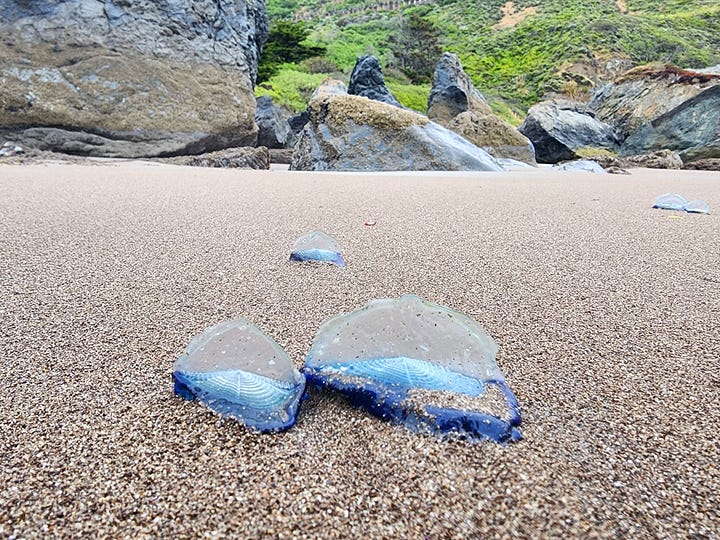
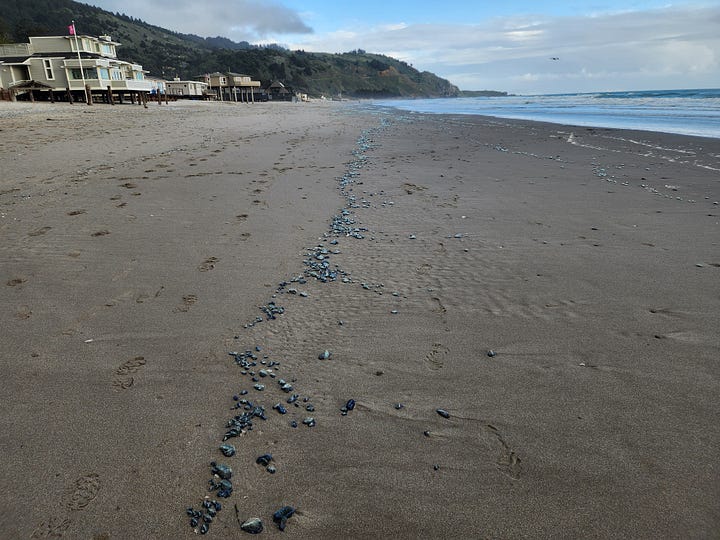
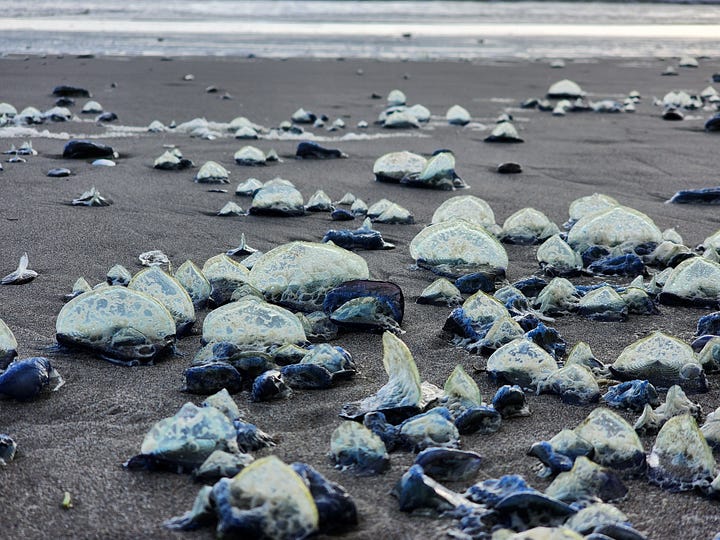
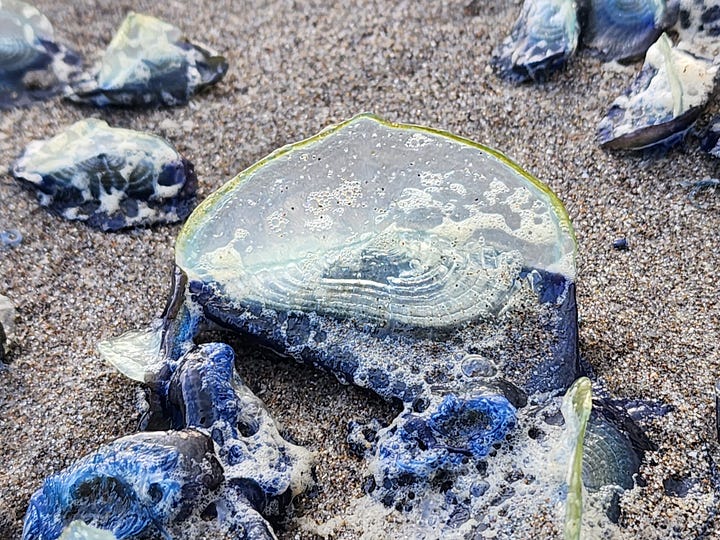
Introduction
Last night, I was unusually weary after a long day and declined Jacque’s invitation to go for a short sunset walk on the beach accompanied by her little dogs, Quigley and Sammy (my grandpups).
She came back with an exciting report: the Velella velella were out there by the millions.
Do you remember my walk on Limantour Beach about two years ago? Even though it’s only forty short minutes from my house, I’d only visited this gorgeous place once in my twenty-five years of living here.
And, although I’d seen the little blue-translucent creatures called Velella velella or, by-the-wind-sailors, on the beach in Stinson before, I slowed on this particular walk, and gave them my complete attention, and captured a few on my camera. Their almost-translucent “sails” and beautiful blue coloring (at least when they are newly beached—they dry and fade quickly) are curious and lovely and I got down low on my belly with my macro lens and tried to capture the world through the little sail of one of them:
It didn’t quite work but I like the shot, anyway.
A Short Velella velella Natural History
TAXONOMY
Kingdom-Animalia
Phylum-Cnidaria (silent “c”)
Class-Hydrozoa
Order-Anthoathecata
Family-Porpitidae
Genus-Velella
Species-Velella velella
The phylum Cnidaria, also includes jellyfish, corals, and sea anemones.
The family Porpitidae contains the free-floating hydrozoans.
Velella is a monospecific genus (i.e., it has only one species, Velella velella).
They’re not jellyfish although they’re often mistaken as such. More closely related to the Portugese man o’war, they have in their blue tentacles, stinging cells called cnidocysts or nematocysts, which help them capture food (plankton) and are not usually harmful to humans (but there might be a sting if you touch them and it’s recommended to wash your hands if you do).
Few predators feed on velella except for nudibranchs (sea slugs) in the genus Glaucus and purple snails in the genus Janthina:
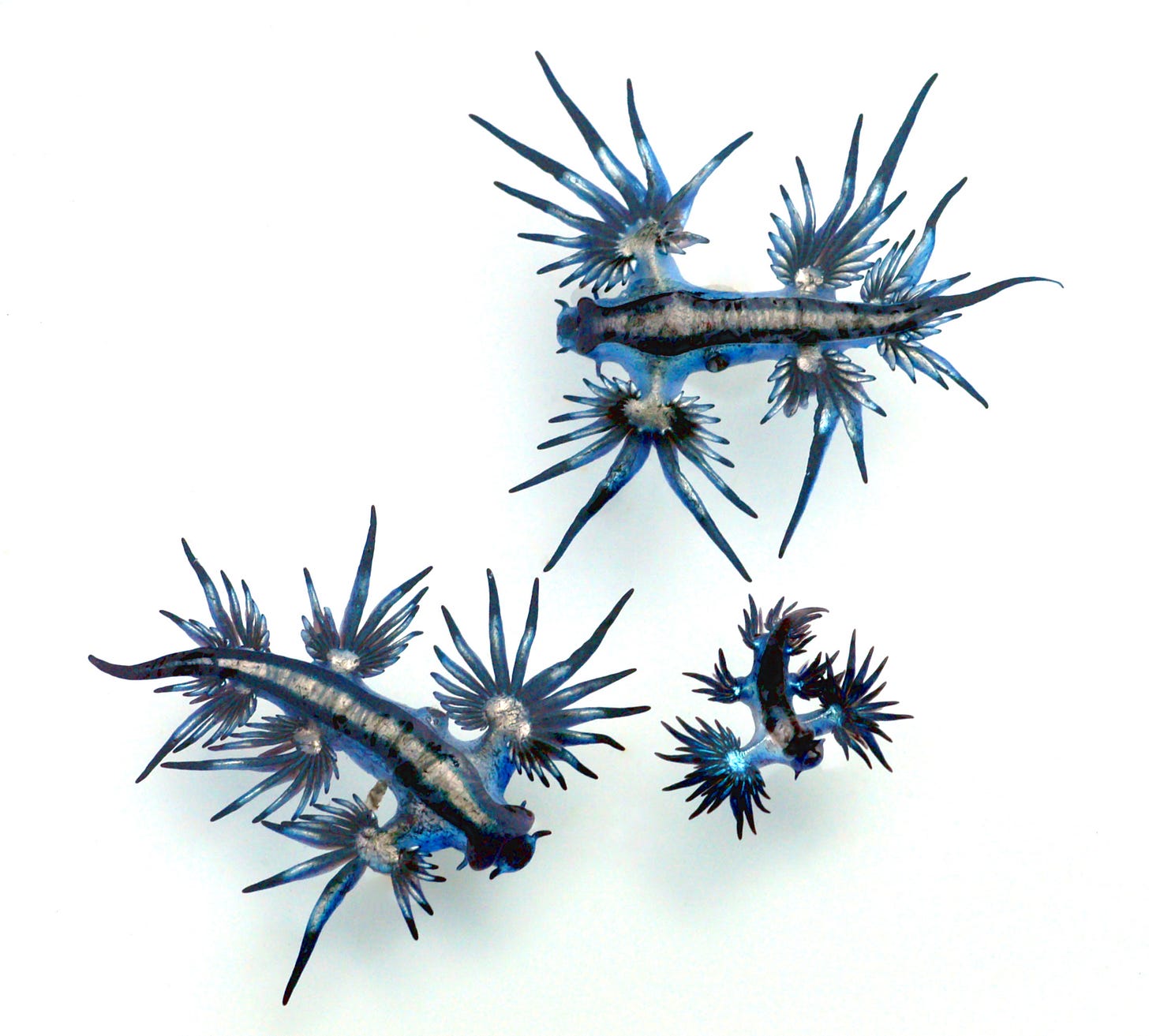
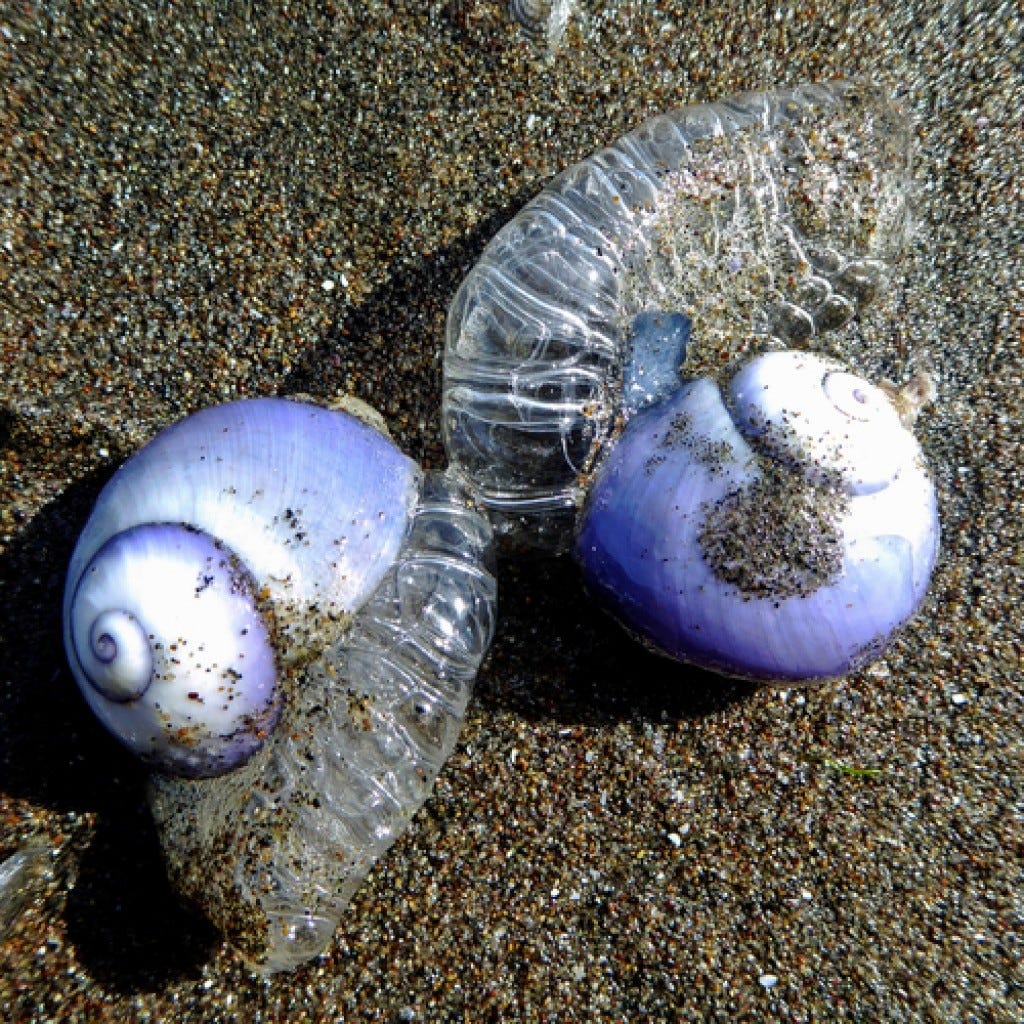
Whereas jellyfish drift with ocean currents, Velella glide along the surface of the ocean where the wind currents carry them. The wind, when it catches the “sail” of the Velella, will carry it downwind at an angle. This directional pull by the wind might be left-handed or right-handed and this determines where they are found in different parts of the world. Our Stinson Beach (Northern Hemisphere) sailors are left-handed. Southern Hemisphere velella are right-handed.
When winds shift, say in a storm, these little creatures (about 3-4 inches long at max) can be taken toward the coastline where they are then stranded on the beaches and die.1
Jacque’s Velella velella Photography
When Jacque returned from her walk, she was in a state of awe. “Mom, there had to have been millions out there today.” She said there was a scientist nearby with whom she had a chat who told her that the little sailors were “dead, but newly dead.”
As the sun set, my multi-talented daughter captured the following photos of the Velella velella on her phone:
BIG LESSON: NEVER SAY NO TO AN INVITATION TO WALK ON THE BEACH, NO MATTER HOW “WEARY”, ESPECIALLY WITH YOUR DAUGHTER (OR SON, OR GRANDCHILD, OR SIBLING, OR NIECE, OR NEPHEW, OR FRIEND, OR ACQUAINTANCE—IN FACT, NEVER SAY NO TO ANY INVITATION TO WALK ON THE BEACH!)
P. S. And if you’re at the beach and the Velella velella are there, careful not to step on ‘em. Those little by-the-wind-sailors are slippery!
This natural history summary of Velella velella was informed by the U.S. National Park Service Point Reyes National Seashore Article “Velella velella”: https://www.nps.gov/pore/learn/nature/otherinvertebrates-velella.htm




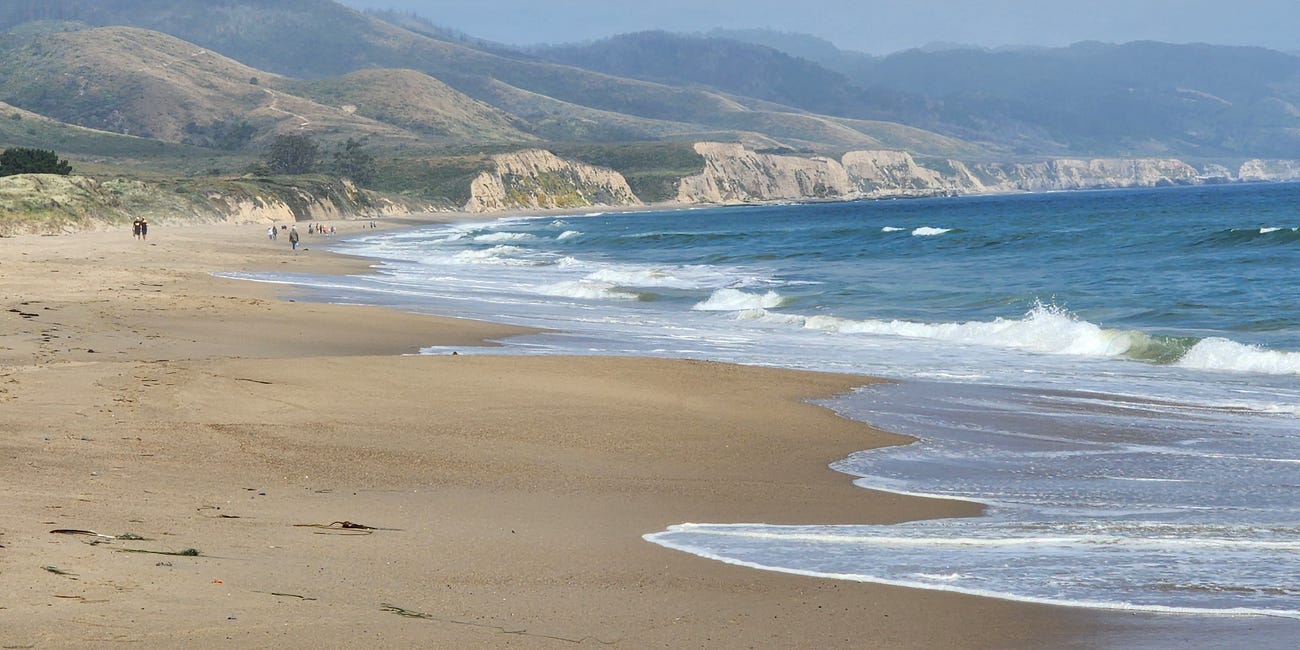
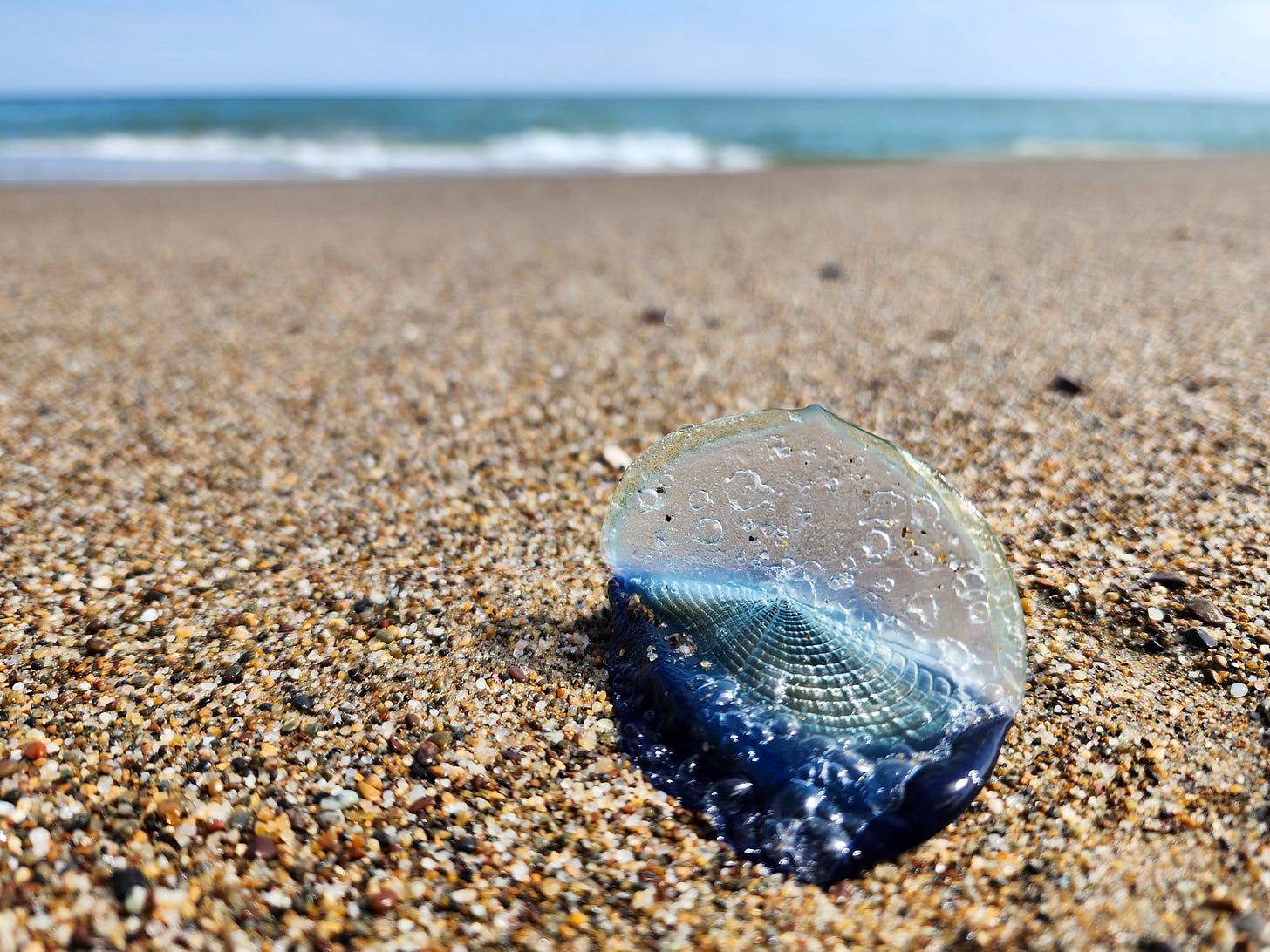


Wild!
Those pictures are great—all of them. How fun and interesting. I don’t think we have anything like that here on the Gulf.
Lovely story and photos. I just saw some on the beach in Carlsbad on my way to San Diego a couple of weeks ago, and am glad to learn more about them.